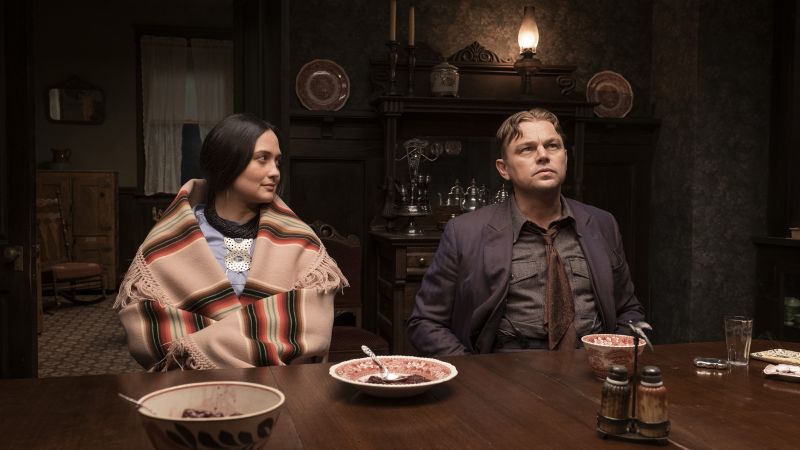CNN – There’s a distinction between “long” and “epic,” even though these terms are often confused in the context of movies. Martin Scorsese presents the former in “Killers of the Flower Moon,” his second consecutive three-and-a-half-hour film based on a true story and backed by a prestige-driven streaming service. In this case, it’s Apple TV+, following Netflix’s decision to allow the veteran director full control in the editing room with “The Irishman.” The result is similar in its weaknesses and less pronounced in its strengths, portraying a stark and somber depiction of the brutal murder of Native Americans for their oil money a century ago, while local authorities turned a blind eye.
Painfully sincere and dedicated to both historical and cultural accuracy, Scorsese has partnered with old and new friends, beginning with his long-time collaborator Robert De Niro, who joins him in what feels like a farewell dance exposing America’s violent past. “Flower Moon” also marks Scorsese’s sixth feature-length film with Leonardo DiCaprio, who, due in part to the limited nature of his character, represents the weak link in providing the movie with the emotional depth and significance that matches its grandeur and scale. The true star in that sense is Lily Gladstone as Mollie Kyle, the Osage woman whose family belongs to the heirs of those oil riches, making them the richest people on Earth per capita at a great cost.
It’s a powerful and authentic performance, hindered by gaps in the character as the script leans towards Ernest. Despite posing as a friend to the Osage Nation, the town’s prominent citizen, Bill Hale (De Niro), aims to gain control of those oil rights, viewing his nephew, DiCaprio’s Ernest Burkhart, as another means to achieve that. Freshly returned from World War I, Ernest arrives in Oklahoma with a desire to make money, viewing marriage to an Osage woman as the quickest path to wealth – a dynamic that both sides understand clearly.
Hollywood Minute: ‘Killers of the Flower Moon’ sets off a major launch
However, the reserved Mollie, for some reason, cannot resist Ernest, who begins by driving her around in his taxi and gradually begins to court her. Amidst the grim business at hand, Ernest genuinely falls in love with her, even as he becomes involved in his uncle’s increasingly ruthless plots to eliminate anyone who might obstruct his path towards all that fortune. Constructed by Scorsese, who shares screenplay credit with Eric Roth in adapting David Grann’s book, the film takes its time to chronicle this series of events, which for many will serve as a revealing chapter in US history. A reference to the 1921 Tulsa Race Massacre provides valuable context, highlighting the brutality endured by people of color a century ago with little fear of consequences or retaliation.
Approximately two-thirds into the film, the narrative shifts gears when the emerging FBI (introducing themselves as the Bureau of Investigation) make an appearance, with Jesse Plemons portraying an agent. This change is helpful and makes one wish they had introduced him earlier. Despite the numerous great movies Scorsese has directed, his streaming phase has produced above-average ones, possibly because the final product is somewhat secondary to the reputation associated with the director and the stars he attracts. Notably, “Killers of the Flower Moon” will receive a wide theatrical release, including screenings in hundreds of Imax theaters. Like another lengthy and weighty film, “Oppenheimer,” its attributes as an aesthetically pleasing period drama do not require the format, but they do contribute to a sense of grandiosity, which was surely the intention. “Oppenheimer” demonstrated that audiences are willing to endure such an experience, but it still feels like the exception. Either way, Scorsese has delivered a movie that delves into a dark history but falls short in terms of impact.
“Killers of the Flower Moon” premieres on October 20 in US theaters and will later be available on Apple TV+. It is rated R. (Disclosure: Lowry’s wife works for an Apple subsidiary.)

